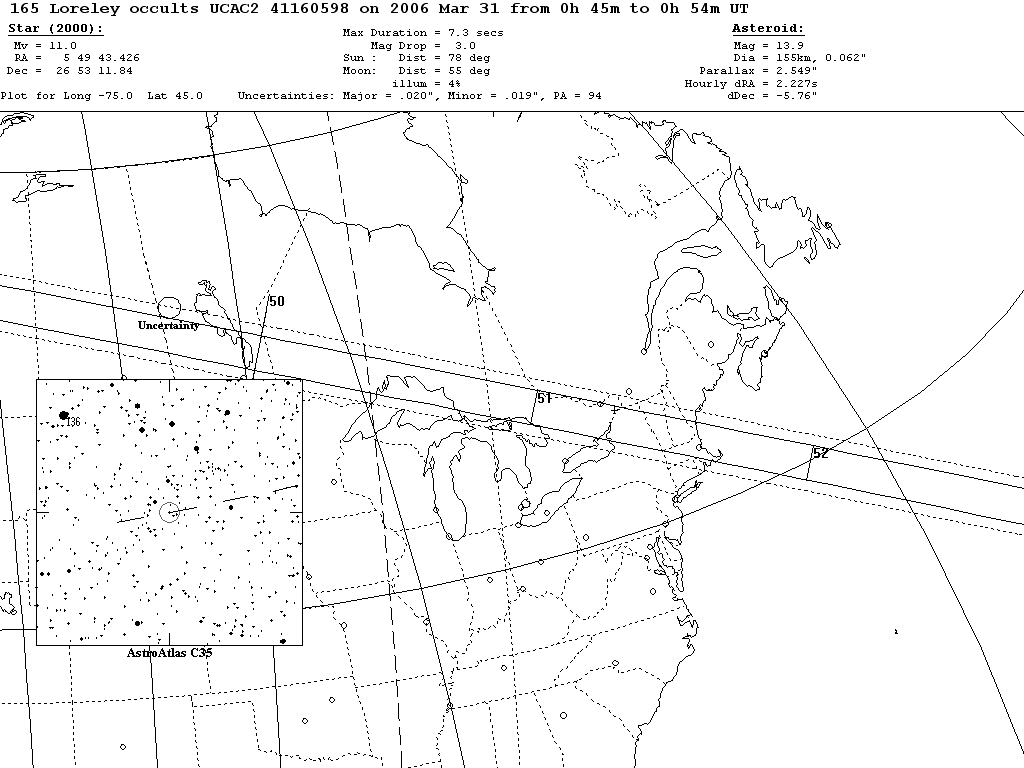
Map courtesy of Steve Preston -- see the Asteroid Occultation Update page for upcoming events.
On the night of March 30/31, 2005, the asteroid (165) Loreley was predicted to occult the star UCAC2 41160598 for observers in the northeast US and central Canada.

Map courtesy of Steve Preston -- see
the Asteroid Occultation Update page
for upcoming events.
The RIT Observatory near Rochester, New York,
fell about 2 pathwidths south of the predicted shadow track, so, if the predictions were correct, we would see nothing.

From an interactive map courtesy of
Occultation Maps for North America ;
thanks to Charlie Ridgway.
Nonetheless, I decided to try to observe the event. It would be a good chance for me to remember how to set up all the equipment after the long winter's hibernation.
The setup was:
I arrived about 75 minutes before the event. I placed a PC-164C video camera on the back of the 12-inch telescope and ran the signal through a Kiwi OSD video time insertion unit: it places GPS-derived timestamps on every frame of the video. The unit picked up a GPS lock just fine. I had a little trouble getting the VCR to accept a tape, but once it did, it recorded the signal without a hitch.
The sky was pretty bright, as the event was predicted to occur when the Sun would be only about 15 degrees below the horizon. I managed to focus on the crescent Moon (always the best first target after switching from eyepiece to camera), then sync'ed the telescope on Regulus. I then slewed to the field, but couldn't see the target star.

After a bit of slewing, I managed to find and focus on the bright star which appears at the upper left corner of the chart above. This star has Tycho magnitudes Bt = 9.4 and Vt = 8.7. After focusing on it, I carefully slewed back towards the target, and was able to star-hop to the right spot. I was sure it was right because the field of view just held a nice triangle of three stars:

The USNO B1.0 magnitudes of these stars are:
star avg B avg R I
------------------------------------------
target 13.0 10.8 10.1
B 12.1 11.7 11.3
C 11.7 12.0 12.1
------------------------------------------
They all appeared roughly equally bright in the video image; maybe "B" was a bit fainter than the other two. All three were faint, but steadily detected.
I locked everything into place and looked at the time: it was 15 minutes BEFORE the predicted event! Wow. That's probably a record for me; usually I am still frantically searching as the event approaches.
The event should have occurred sometime around UT 2006 Mar 31 00:51:15, with a big drop of 3.0 mag into invisibility, for up to 7.3 seconds. I saw nothing at the predicted time, or within 3 minutes either way. I went home and reviewed the tape again, but still saw no dimming of the target. I declare a "MISS" from our location. I have sent a report to Jan Manek: